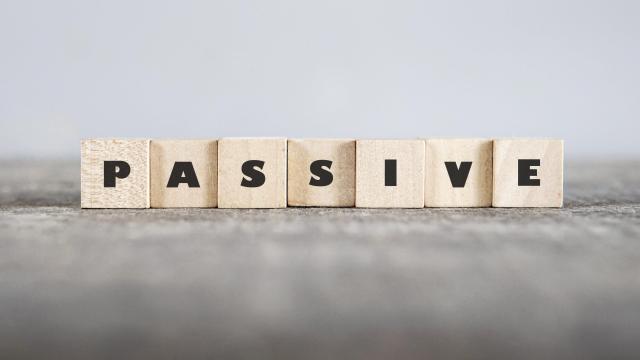Even when you think you’ve got a handle on grammar, you might not realise how easy it is easy to unwittingly venture into lexical territory that would rile your freshman year English teacher. Certainly back in my college days, I had a few teacher’s assistants who would get on my case for using the passive voice.
Bright red marker underlined heaps of my prose, with an all-caps warning noting that my argument would be made clearer if I’d only adhere to the active voice when writing papers. At the time, I hadn’t yet discovered what the passive voice was. Alas, I had to learn that the passive voice is abhorred by a select few grammar snobs. (None of whom are likely to have enjoyed the two prior paragraphs.)
Here’s what you need to know about the passive versus active voice so you can avoid the sort of writerly mistakes I made in college but definitely never make anymore.
First: Active voice
In order to understand the passive voice we first need to dive into the more commonly used active voice. Basically, the active voice is being used when the subject of a sentence performs the actions denoted by a verb.
As Harvard Historian Mariel Wolfson elaborates for American Journal Experts, “[a]t the most basic level, the active voice emphasises the person or agent who performs an action, in short, the actor.’”
Basically, the active voice is a much more commonly used grammatical structure, in which the subject of a sentence is clearly defined.
If you’d like an example of the active voice, consider the below:
“The boy really loved soccer.”
Yes, it’s that simple. The active voice doesn’t leave much room for confusion. As Perdue University’s Online Writing Lab explains:
Using active voice for the majority of your sentences makes your meaning clear for readers, and keeps the sentences from becoming too complicated or wordy.
Perdue’s definition gets at what most writing instructors are trying to convey when they’re teaching you to write. Using the active voice is straightforward and simple, but that doesn’t necessarily mean the passive voice is to be avoided at all costs.
What’s the passive voice?
The passive voice flips the active sentence structure on its head. It’s a topsy-turvy kind of way of describing things, as the Writing Centre at the University of North Carolina, Chapel Hill explains:
A passive construction occurs when you make the object of an action into the subject of a sentence. That is, whoever or whatever is performing the action is not the grammatical subject of the sentence.
In other words, the verb obscures what the subject of the sentence is doing. An example of a sentence in the passive voice:
“The ball was kicked by the boy.”
If you were going to write this in the active voice, you’d just go with “The boy kicked the ball,” a sentence that clearly delineates that the subject of the sentence — the boy — did the kicking.
As a general rule, passive voice construction usually necessitates using more words than the active voice; as a consequences, your point is more likely to be obscured — and your readers confused — by using the passive voice.
Is using the passive voice ever appropriate?
It isn’t always crucial (or pleasurable for the reader) to emphasise the main actor of a sentence. As Wolfson explains, “there are many examples where we either cannot or do not want to emphasise the actor, particularly if there is an element of mystery involved.”
She uses the passive voice-appropriate example of expressing mysterious developments, in which the main actors are often unknown:
- My car was stolen on Sunday night.
There are some academic contexts in which the passive voice is even preferred — science writing, for example. When sharing the results of observations and scientific study, researchers often like to lift the onus from the researcher and place it more squarely on the scientific method employed.
As George Washington University explains:
Passive voice is useful to pull the emphasis of the sentence away from the researcher. It is especially applicable to the “Method” section of scientific journals. When using passive voice, make sure that the performer is either obvious or unimportant.
Basically, using the passive voice too much can obscure the point you’re trying to make. So be wise about how you use it, lest you endure being stared down by a judgmental grammar purist.

Leave a Reply
You must be logged in to post a comment.